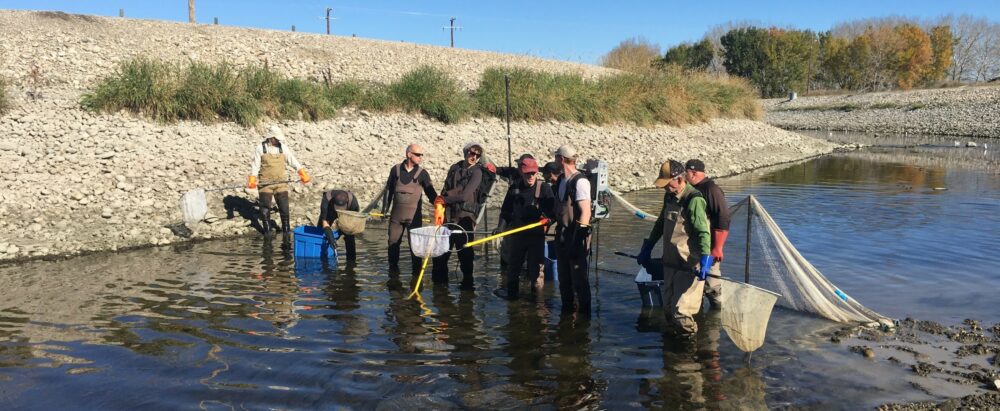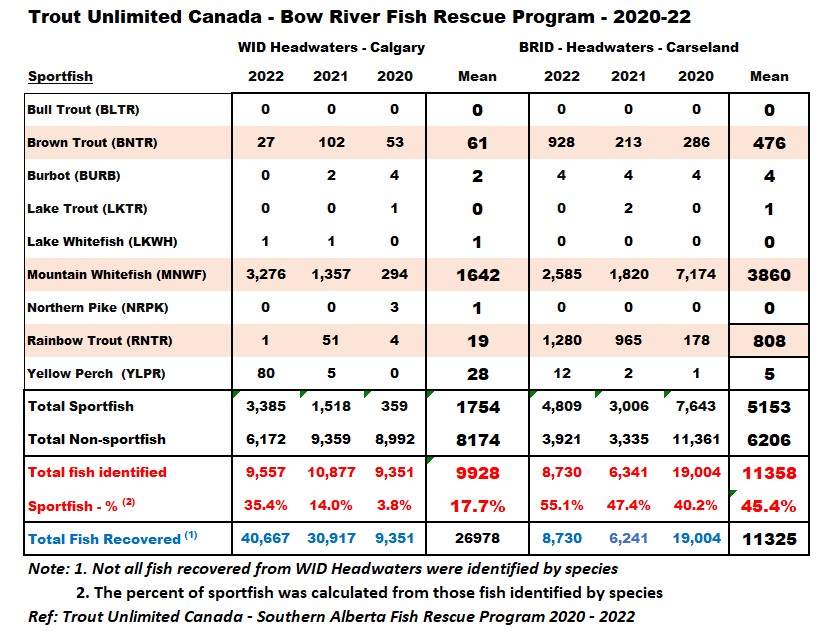Every year, the irrigation canals located throughout southern Alberta are shut off in October that results in the stranding of any fish which entered the canals during the irrigation season. As the canals drain and what little water remains freezes, and fish would die if not rescued by groups of concerned volunteers. Trout Unlimited Canada, in partnership with Alberta Environment & Protected Areas coordinate fish rescues every year. The number of fish rescued is staggering!
Over the past three years an average of 26,000 fish have been rescued from the Western Irrigation Headwaters Canal in Calgary, and 11,325 at the Bow River Irrigation Headwaters Canal at Carseland.
But what contribution does the fish rescue have on the resident fish population?
Entrainment of fish in irrigation canals has been considered a major source of mortality for some fish populations. However, the magnitude of fish loss from entrainment is usually not evaluated from a broader perspective of its impact on the source fish population. A 2003 research project at the Bow River Irrigation Headwaters Canal at Carseland addressed the impact of fish entrainment in the canal on the Bow River sport fishery. A review of the research findings is available on the CRUA Resource Page that gives an account of the impact of irrigation canal entrainment on the Bow River fish population:
- The Carseland Canal entrains large numbers of fish every year. The three target species (rainbow trout, brown trout and whitefish) alone constituted an estimated loss of 98,510 fish of all sizes from the Bow River in 2003. Entrainment of all other species in the Carseland Canal may be between 139,977 and 1,444,928 fish. While this is a large number of fish, the impact of loss to the canal on the total population abundance of the three target species is relatively low. Our results for fish greater than 150 mm indicate that mortality due to entrainment in the canal accounts for only 0.6%, 0.5%, and 0.3% of all sources of annual mortality for rainbow trout, brown trout, and mountain whitefish, respectively. These results are similar to findings on other irrigation canals.
- The annual Trout Unlimited Canada fish rescue on the Carseland Canal provides a useful source of information for examining the relative change in species composition and size structure of entrained fish between years. However, our results indicate that although fish rescue is extremely efficient at capturing fish, the number of fish rescued each year is a small proportion of the total estimated entrainment. In 2003, the fish rescue volunteers recovered 9,455 of all sizes of the three target species out of 98,510 estimated to have been entrained throughout the diversion period. This represents only 9.6% of the estimated entrained target fish.
The project was completed in 2003 but also used data from previous years when the Bow River fish populations were at their highest in many years. A subsequent decline in the Bow River Rainbow Trout population of 43% was reported over a 10-year period from 2003 to 2013 has heightened the fishing community’s interest in fish entrainment as a possible cause for the Bow River fish population decline.
The discussion within the report gives direction that should be considered in the interpretation of fish entrainment and consideration of what research is needed to fill in the gaps.

